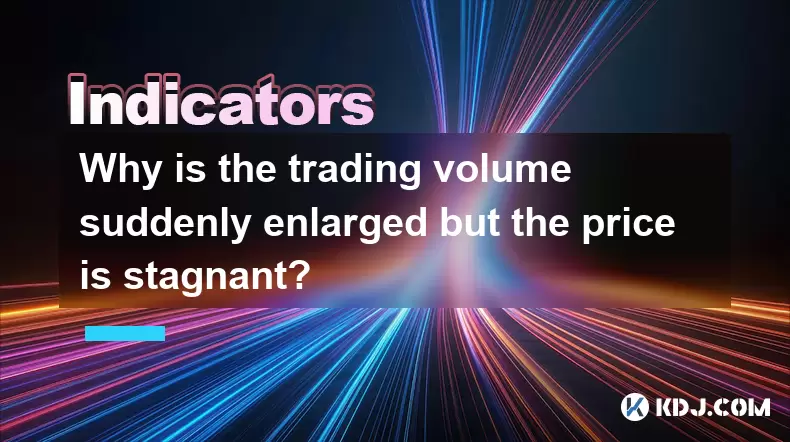-
 Bitcoin
Bitcoin $108,092.5658
-0.99% -
 Ethereum
Ethereum $2,546.4530
-1.12% -
 Tether USDt
Tether USDt $1.0000
0.01% -
 XRP
XRP $2.2676
0.12% -
 BNB
BNB $659.1616
-0.30% -
 Solana
Solana $148.8297
-1.97% -
 USDC
USDC $1.0000
0.02% -
 TRON
TRON $0.2874
-0.30% -
 Dogecoin
Dogecoin $0.1676
-3.64% -
 Cardano
Cardano $0.5765
-1.73% -
 Hyperliquid
Hyperliquid $37.2069
-6.18% -
 Bitcoin Cash
Bitcoin Cash $497.9918
-0.10% -
 Sui
Sui $2.8427
-2.26% -
 Chainlink
Chainlink $13.2689
-2.06% -
 UNUS SED LEO
UNUS SED LEO $9.0541
0.15% -
 Stellar
Stellar $0.2487
-0.92% -
 Avalanche
Avalanche $17.7710
-3.09% -
 Shiba Inu
Shiba Inu $0.0...01167
-1.28% -
 Toncoin
Toncoin $2.7488
-2.80% -
 Hedera
Hedera $0.1559
-2.28% -
 Litecoin
Litecoin $85.8945
-2.48% -
 Monero
Monero $316.0985
-2.09% -
 Dai
Dai $1.0001
0.02% -
 Polkadot
Polkadot $3.3481
-1.83% -
 Ethena USDe
Ethena USDe $1.0000
0.00% -
 Bitget Token
Bitget Token $4.2910
-3.04% -
 Uniswap
Uniswap $7.4131
-0.09% -
 Aave
Aave $280.9266
-2.67% -
 Pepe
Pepe $0.0...09816
-3.18% -
 Pi
Pi $0.4557
-2.29%
Why is the trading volume suddenly enlarged but the price is stagnant?
Jun 30, 2025 at 09:21 am

Understanding Trading Volume and Price Relationship
In the world of cryptocurrency, trading volume is often seen as a barometer for market interest. However, it's not uncommon to observe scenarios where trading volume surges dramatically, yet the price remains stagnant. This phenomenon can confuse both novice and experienced traders alike. Normally, an increase in trading activity correlates with significant price movement—either upward or downward. When this expected correlation breaks down, it signals underlying dynamics that need deeper exploration.
Market Manipulation and Whales' Influence
One of the most plausible explanations for high volume with no price change lies in market manipulation by large holders, commonly referred to as "whales." These individuals or entities possess substantial amounts of a particular cryptocurrency and can influence the market through strategic trades. For instance, whales may place large buy and sell orders at similar price levels to create artificial volume without moving the price significantly. This tactic, known as wash trading, involves self-trading or coordinated trading between accounts to give the impression of high market activity and attract other investors.
- Whales place matching buy and sell orders at the same price level.
- These trades generate volume without altering the overall supply-demand balance.
- Other traders perceive increased activity and might follow suit, leading to real buying pressure later.
Order Book Depth and Liquidity Pools
Another factor contributing to this situation is the depth of the order book on exchanges. In some cases, especially with lower-cap cryptocurrencies, there may be deep liquidity pools at certain price points. This means that even though a large number of transactions are taking place, they're all concentrated around a narrow price range. As a result:
- Buy and sell walls absorb large volumes without triggering price changes.
- Liquidity providers may be executing trades within tight spreads to avoid slippage.
- This behavior keeps the price stable despite high transaction counts.
This phenomenon is particularly noticeable during periods of low volatility, where traders are hesitant to push the price higher or lower due to uncertainty or lack of catalysts.
Exchange-Specific Dynamics
The choice of exchange also plays a critical role in interpreting volume and price discrepancies. Some exchanges offer incentives for high-volume trading, such as rebates or reduced fees. Traders might exploit these incentives by generating fake volume through automated bots or coordinated strategies. Additionally:
- Different exchanges report volume differently; some include internal transfers or wash trades.
- Volume on less-regulated platforms may not reflect genuine market demand.
- Price data from one exchange may not account for multi-market dynamics.
Traders should always cross-reference volume metrics across multiple platforms to verify authenticity and ensure accurate interpretation.
Psychological and Behavioral Factors
Human psychology also contributes to this anomaly. During sideways markets, traders often engage in range-bound trading, buying near support and selling near resistance. This repetitive pattern generates consistent volume without any directional bias. Moreover:
- Traders may place stop-loss and take-profit orders within a tight range, creating cyclical volume.
- Fear of missing out (FOMO) can lead to rapid entry and exit, keeping prices locked in place.
- Algorithmic trading bots execute micro-orders that inflate volume without affecting price.
These behaviors reinforce the idea that volume alone isn't always a reliable indicator of future price movement unless analyzed alongside order flow and sentiment indicators.
Technical Indicators and Tools for Analysis
To better understand why volume spikes while price stagnates, traders can use several technical tools:
- On-Balance Volume (OBV): Measures cumulative buying and selling pressure over time.
- Volume Profile: Shows which price levels have the most historical volume concentration.
- Order Flow Analysis: Reveals imbalances between buyers and sellers in real-time.
By combining these tools with candlestick patterns and support/resistance levels, traders can gain a clearer picture of whether the volume spike indicates accumulation/distribution or mere noise.
Frequently Asked Questions
Q: Can sudden high volume indicate an upcoming price breakout?
A: Not necessarily. While high volume often precedes breakouts, it must coincide with price movement beyond key levels to confirm momentum. Stagnant prices suggest a lack of conviction among major players.
Q: How can I differentiate between real and fake trading volume?
A: Look for consistency across multiple exchanges. Real volume typically correlates with on-chain activity, social media buzz, and news events. Fake volume tends to appear suddenly without external catalysts.
Q: Is it safe to trade during periods of high volume but no price movement?
A: Caution is advised. High volume without direction may signal indecision or manipulation. It’s wise to wait for confirmation through candlestick closes or order book shifts before entering positions.
Q: What role do derivatives markets play in this scenario?
A: Derivatives like futures contracts can generate significant volume independently of spot prices. Large open interest and funding rate fluctuations may cause volume distortions without immediate price impact.
Clause de non-responsabilité:info@kdj.com
Les informations fournies ne constituent pas des conseils commerciaux. kdj.com n’assume aucune responsabilité pour les investissements effectués sur la base des informations fournies dans cet article. Les crypto-monnaies sont très volatiles et il est fortement recommandé d’investir avec prudence après une recherche approfondie!
Si vous pensez que le contenu utilisé sur ce site Web porte atteinte à vos droits d’auteur, veuillez nous contacter immédiatement (info@kdj.com) et nous le supprimerons dans les plus brefs délais.
-
 ICNT Échangez maintenant
ICNT Échangez maintenant$0.3182
30.31%
-
 M Échangez maintenant
M Échangez maintenant$0.2011
23.43%
-
 SOLO Échangez maintenant
SOLO Échangez maintenant$0.3788
17.55%
-
 HSK Échangez maintenant
HSK Échangez maintenant$0.7010
17.49%
-
 SHX Échangez maintenant
SHX Échangez maintenant$0.0116
15.42%
-
 COREUM Échangez maintenant
COREUM Échangez maintenant$0.1392
8.59%
- Bitcoin Solaris Market Launch: A New Dawn or Just Another Altcoin?
- 2025-07-08 20:30:12
- Bitcoin, Memecoin Mania, and the All-Time High Hunt: What's Next?
- 2025-07-08 20:30:12
- Byrq Coin: Scam or Savior? A Deep Dive Review
- 2025-07-08 20:50:12
- Shiba Inu's Burn Rate Bonanza: Can Crypto Burns Ignite a Price Rally?
- 2025-07-08 20:50:12
- Telekom, injectif et validateurs: une plongée profonde dans la sécurité et la croissance du réseau
- 2025-07-08 21:10:12
- ROM: Golden Age - un demi-million de pré-registrations et un butin crypto!
- 2025-07-08 21:15:12
Connaissances connexes

How to trade Dogecoin based on funding rates and open interest
Jul 07,2025 at 02:49am
<h3>Understanding Funding Rates in Dogecoin Trading</h3><p>Funding rates are periodic payments made to either long or short traders ...

What is the 'God Mode' indicator for Dogecoin
Jul 07,2025 at 04:42pm
<h3>Understanding the 'God Mode' Indicator</h3><p>The 'God Mode' indicator is a term that has emerged within cryptocurrency trading ...

Using Gann Fans on the Dogecoin price chart
Jul 07,2025 at 09:43pm
<h3>Understanding Gann Fans and Their Relevance in Cryptocurrency Trading</h3><p>Gann Fans are a technical analysis tool developed b...

How to spot manipulation on the Dogecoin chart
Jul 06,2025 at 12:35pm
<h3>Understanding the Basics of Chart Manipulation</h3><p>Chart manipulation in the cryptocurrency space, particularly with Dogecoin...

Dogecoin market structure break explained
Jul 07,2025 at 02:51am
<h3>Understanding the Dogecoin Market Structure</h3><p>Dogecoin, initially created as a meme-based cryptocurrency, has evolved into ...

How to backtest a Dogecoin moving average strategy
Jul 08,2025 at 04:50am
<h3>What is a Moving Average Strategy in Cryptocurrency Trading?</h3><p>A moving average strategy is one of the most commonly used t...

How to trade Dogecoin based on funding rates and open interest
Jul 07,2025 at 02:49am
<h3>Understanding Funding Rates in Dogecoin Trading</h3><p>Funding rates are periodic payments made to either long or short traders ...

What is the 'God Mode' indicator for Dogecoin
Jul 07,2025 at 04:42pm
<h3>Understanding the 'God Mode' Indicator</h3><p>The 'God Mode' indicator is a term that has emerged within cryptocurrency trading ...

Using Gann Fans on the Dogecoin price chart
Jul 07,2025 at 09:43pm
<h3>Understanding Gann Fans and Their Relevance in Cryptocurrency Trading</h3><p>Gann Fans are a technical analysis tool developed b...

How to spot manipulation on the Dogecoin chart
Jul 06,2025 at 12:35pm
<h3>Understanding the Basics of Chart Manipulation</h3><p>Chart manipulation in the cryptocurrency space, particularly with Dogecoin...

Dogecoin market structure break explained
Jul 07,2025 at 02:51am
<h3>Understanding the Dogecoin Market Structure</h3><p>Dogecoin, initially created as a meme-based cryptocurrency, has evolved into ...

How to backtest a Dogecoin moving average strategy
Jul 08,2025 at 04:50am
<h3>What is a Moving Average Strategy in Cryptocurrency Trading?</h3><p>A moving average strategy is one of the most commonly used t...
Voir tous les articles

























































































